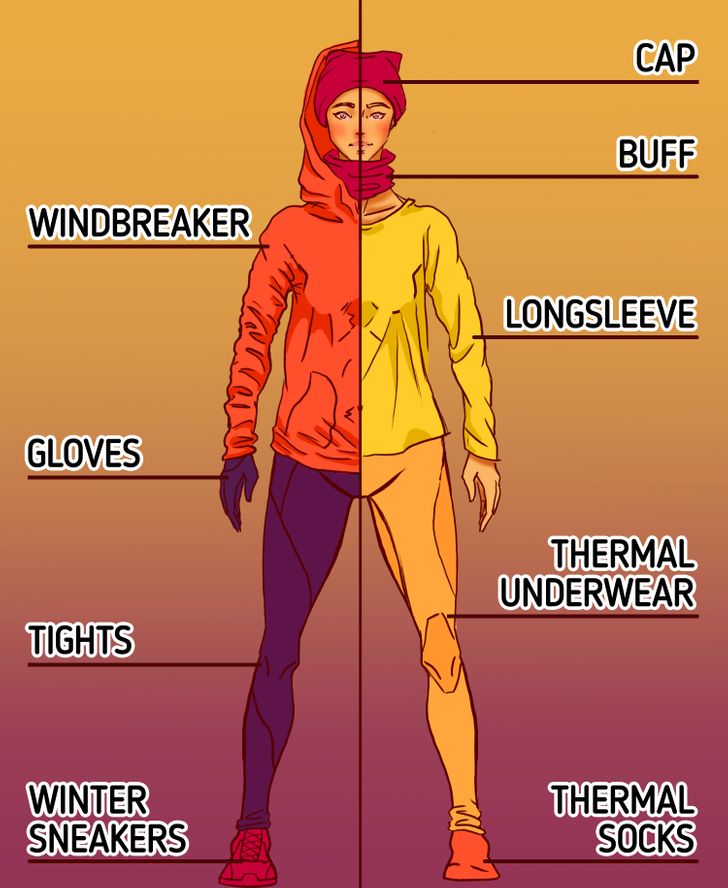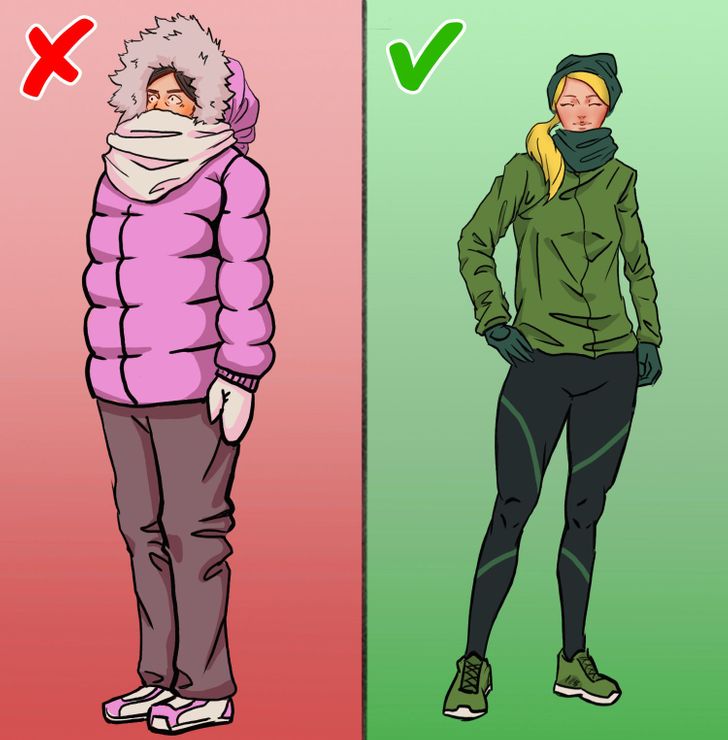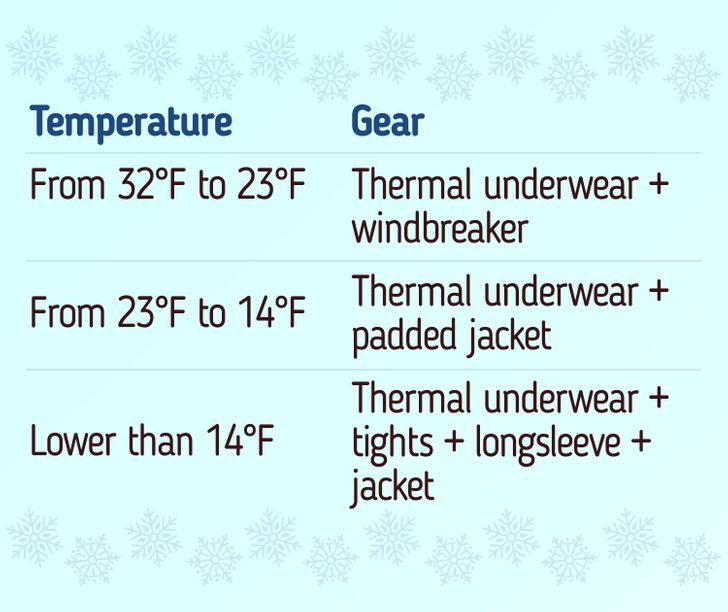What to Wear for Winter Running
Winter running clothes should not only keep you warm, but also effectively absorb moisture from your body to prevent hypothermia. Special gear, which is made of breathable materials and equipped with ventilation inserts and zippers in the armpits, handles the thermoregulation function perfectly. Buying it will make your winter running really comfortable.
5-Minute Crafts will help you choose the right items and make your winter training as comfortable as possible.
Basic items

-
Thermal underwear. It allows moisture to move away from the skin, so the body stays dry at all times. This is especially important in severe frosts.
-
Tights. Depending on the temperature, add technical running tights or compression tights under your running clothes. Naturally, winter-weight tights are slightly thicker. For extra comfort and warmth, look for running tights with brushed lining and wind protection.
-
Longsleeve. A sports longsleeve of high quality will keep you warm and draw moisture away from your skin.
-
Windbreaker. The lower the temperature, the longer a jacket should be. It should also be water-resistant and protect you from wind and snow. You can use the jacket from a ski training suit.
-
Hat. It should wick away moisture and protect you from the wind.
-
Buff. This accessory will protect your face and neck from freezing. If the weather allows, it can make a good hat too.
-
Gloves. On cold days, wear gloves that wick away moisture. If it’s extremely cold, mittens are a better choice because your fingers will share their body heat.
-
Socks. Avoid cotton socks during running because cotton doesn’t wick away moisture, instead it soaks it up, and once it’s wet, it stays wet, leaving your feet cold, wet, and prone to frostbite and blisters. Instead, make sure to opt for a good pair of wicking socks, which are long enough to cover your ankles.
-
Shoes. Get Gore-Tex or some other type of winter shoes with waterproof fabrics in the upper part of the shoe. Make sure they are equipped with a proper sole for good traction and protection. Choose shoes one size bigger to wear thick socks.
Principles of winter layering

If you only put on a puffer jacket over a thin T-shirt, you’ll get covered with sweat in just a couple of minutes of running, and you won’t be able to continue because of overheating. It’s much more effective to use the principle of layering:
- First layer — thermal underwear. Its purpose is to wick away moisture and keep your skin dry.
- Second layer — shirt and pants or a longsleeve and tights. They will keep you warm.
- Third layer — a windbreaker or a jacket made of membrane fabric. It will protect you from snow, rain, and wind.
✅ Determine the number of layers depending on the temperature outside. Here are some possible options for what you can wear during winter running:

Tip: Since your body temperature will rise during your run, it’s a good idea to dress for 20 °F warmer than the weather outside. Just be sure to consider whether it’s going to rain or snow, as keeping dry in cold temperatures is essential to preventing a dangerous scenario like hypothermia.